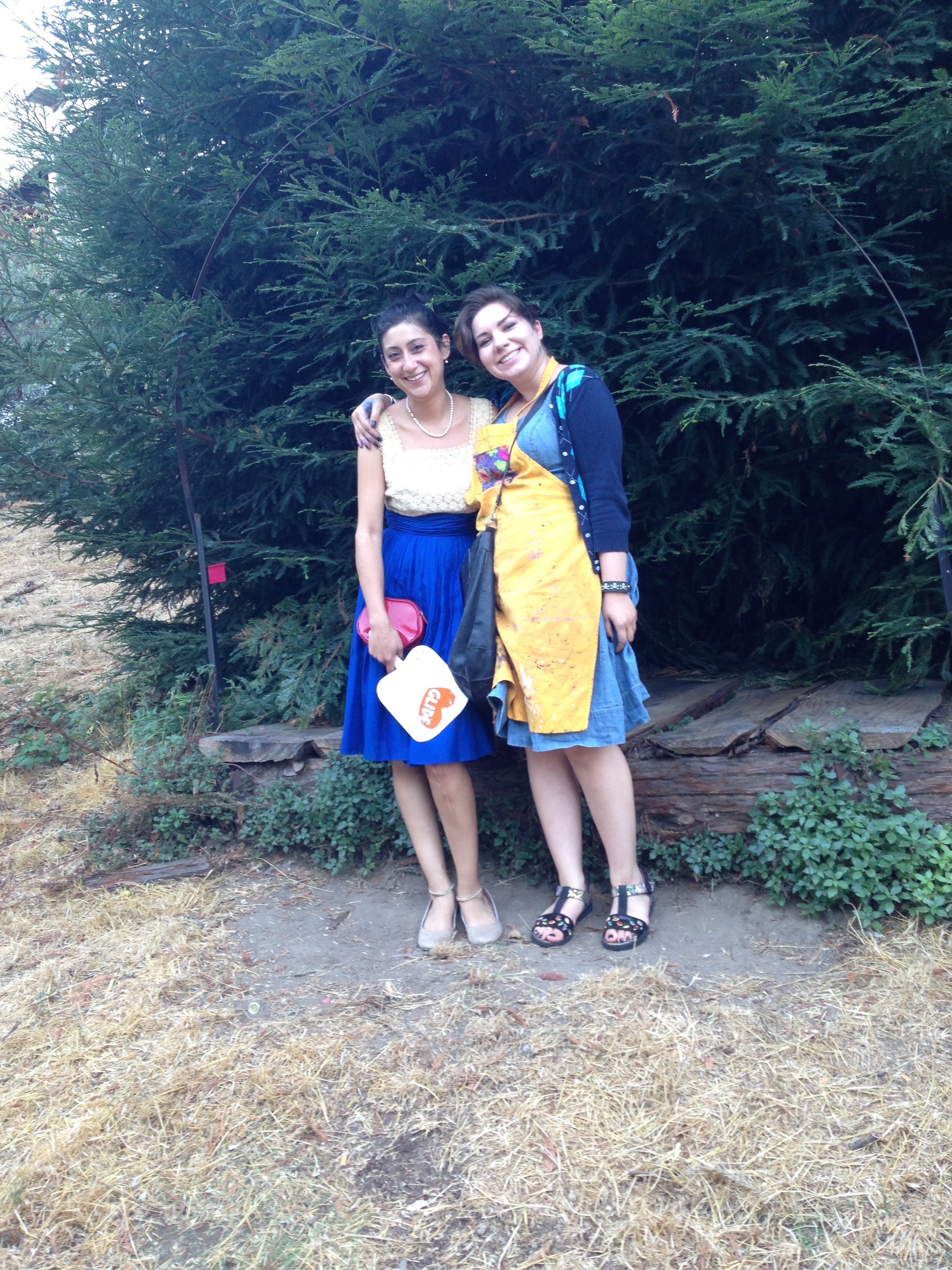
The SFAI meadow—a sloping green haven at the northeast corner of campus frequented by hummingbirds, hawks, and swallowtails, and home to a venerable California buckeye, and an encompassing redwood—is not formally a studio space at SFAI, but it offers generative possibilities to students in every discipline.
I started gardening in this space, almost a quarter of an acre, in August of 2014. For the past six years, I have incorporated time in the meadow into my courses in composition, creative writing, and contemporary practice. We explore such core principles as soil building, propagation, composting, water conservation, seed starting, plant care, and pruning. As we take part in the rhythms of the garden, the garden in turn cultivates our own capacities for observation, empathy, and resilience.
Class meetings often include collaborating on a garden project, and working on existing plantings throughout the meadow. They also include conversation springing from reading and observations, as well as a period of more solitary time in which students write, draw, make notes, meditate, or otherwise follow their own interests. Course readings provide fundamental principles of gardening and permaculture, and extend connections to poetry, art, and science. In addition to the work we do as a group, students explore resources for starting or further developing their own gardens.
GL
I started gardening in this space, almost a quarter of an acre, in August of 2014. For the past six years, I have incorporated time in the meadow into my courses in composition, creative writing, and contemporary practice. We explore such core principles as soil building, propagation, composting, water conservation, seed starting, plant care, and pruning. As we take part in the rhythms of the garden, the garden in turn cultivates our own capacities for observation, empathy, and resilience.
Class meetings often include collaborating on a garden project, and working on existing plantings throughout the meadow. They also include conversation springing from reading and observations, as well as a period of more solitary time in which students write, draw, make notes, meditate, or otherwise follow their own interests. Course readings provide fundamental principles of gardening and permaculture, and extend connections to poetry, art, and science. In addition to the work we do as a group, students explore resources for starting or further developing their own gardens.
GL

























































